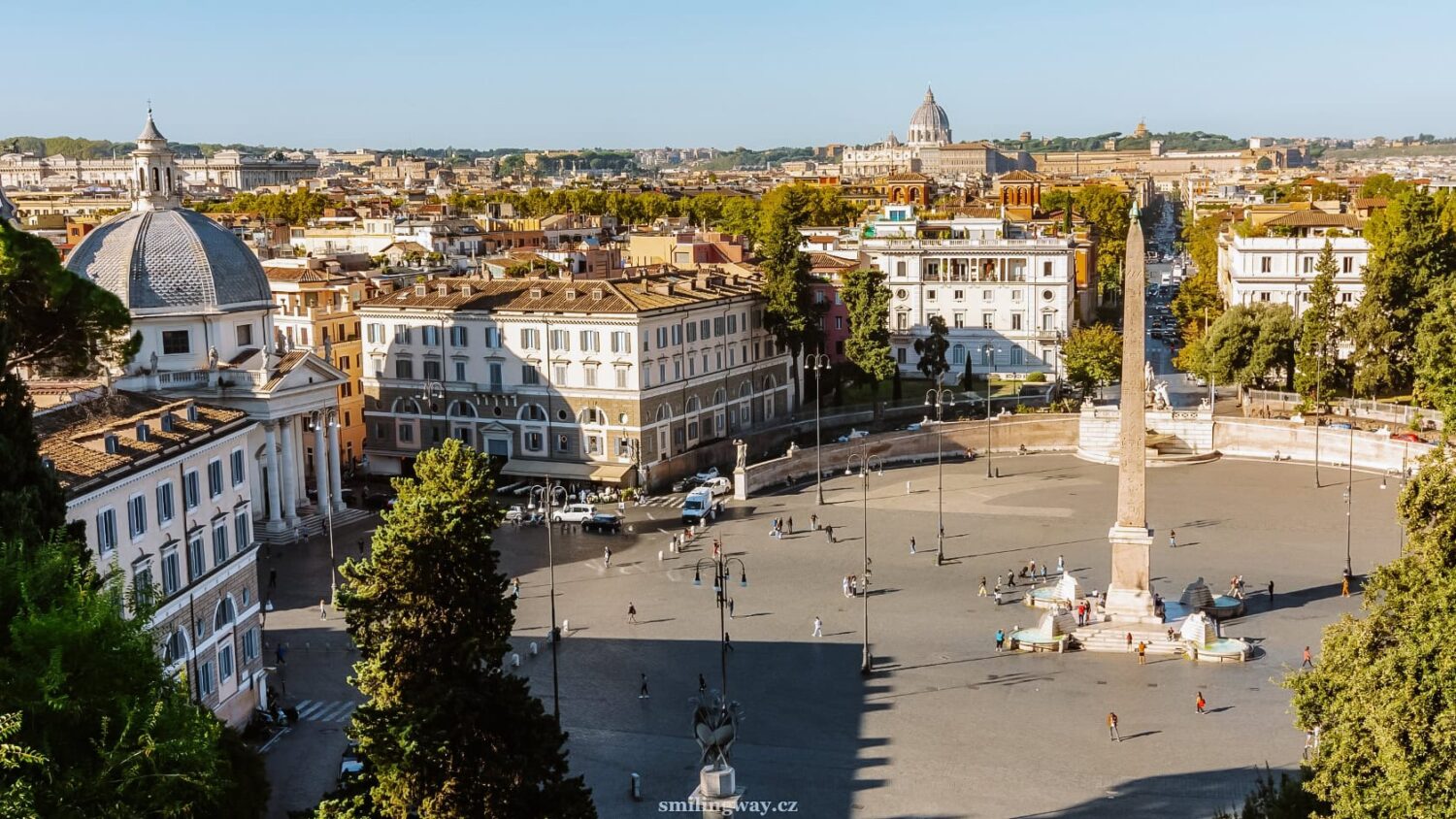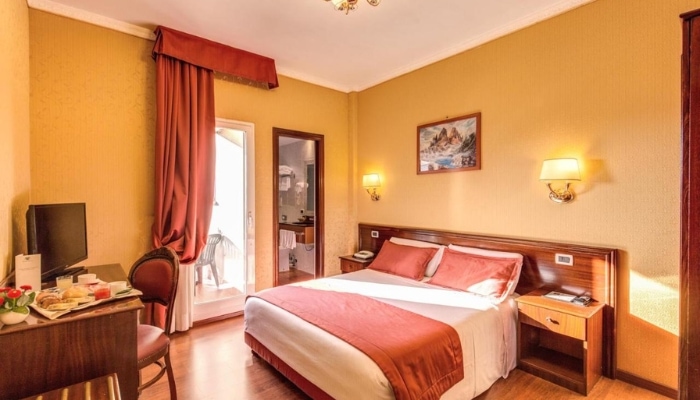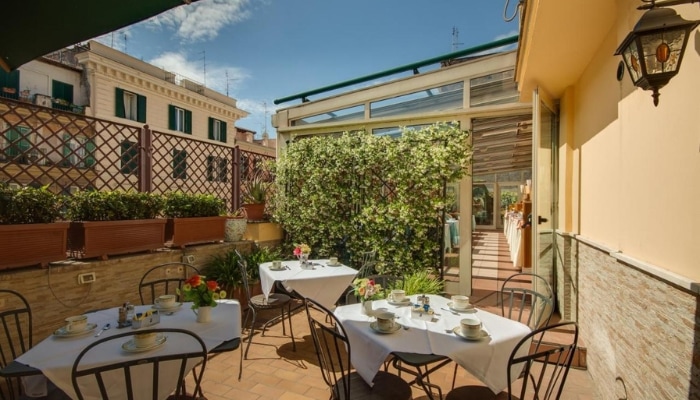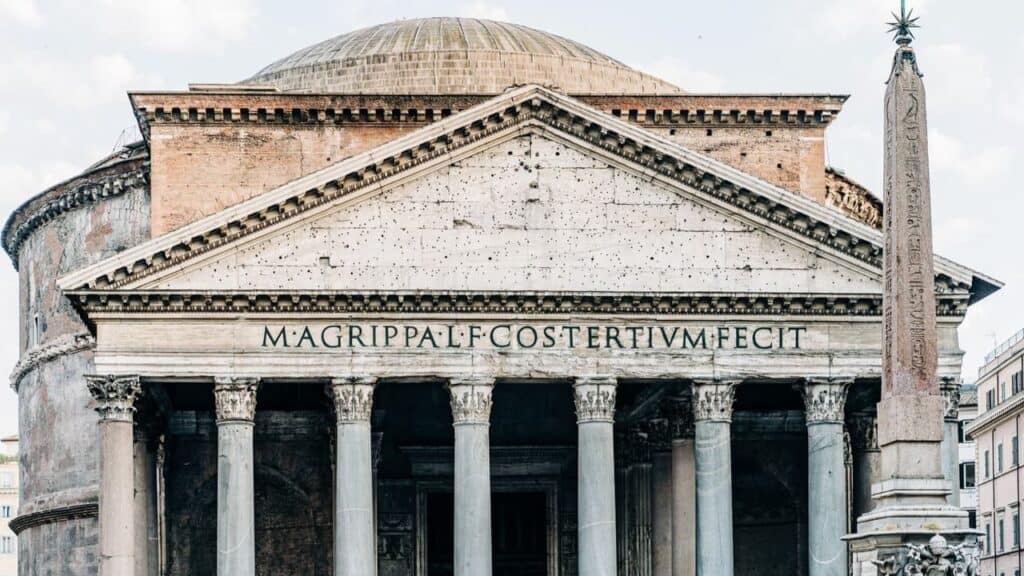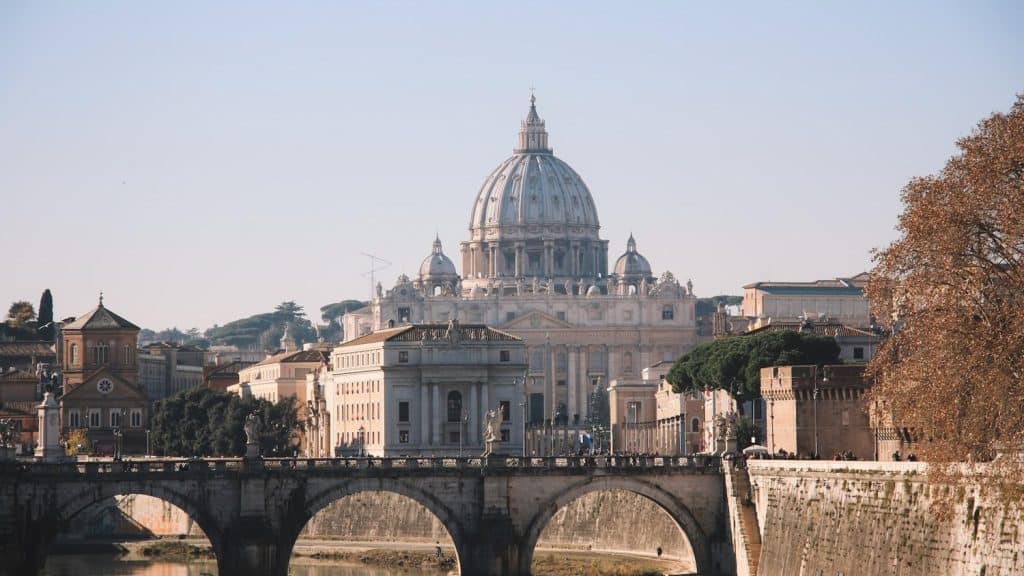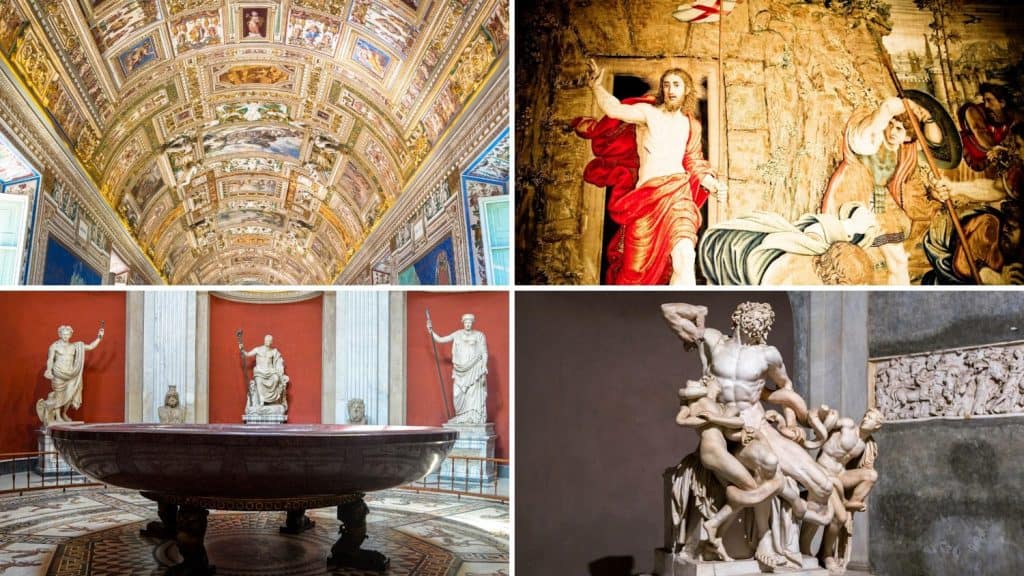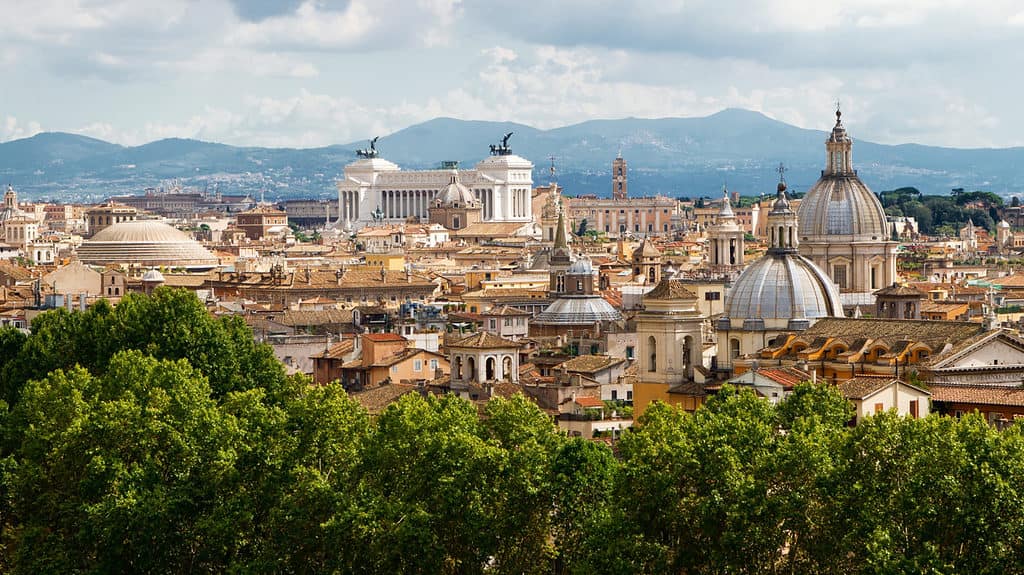Tips and tricks for enjoying Rome and travelling to Rome – transport, how to get to the city centre, accommodation, prices in Rome, food and restaurants and other things to do before your trip.
Transport to Rome
The basic rule for transport in Rome is – be careful. The legendary passion and temperament of the Italians is multiplied on the road. Chaos everywhere. That you’re on the crosswalk? Nobody cares.
Transport from Rome Airport to the city centre
There are 2 airports in Rome – Fiumicino (FCO) and Ciampino (CIA). Both airports are accessible by bus to the city centre. The train is also an option, which is faster but more expensive.
Fiumicino Airport is less than an hour from the centre. Ciampino Airport is a little closer – you’re 40 minutes from Termini Central Station. Read our detailed guide on how to get from Fiumicino Airport to the city centre.

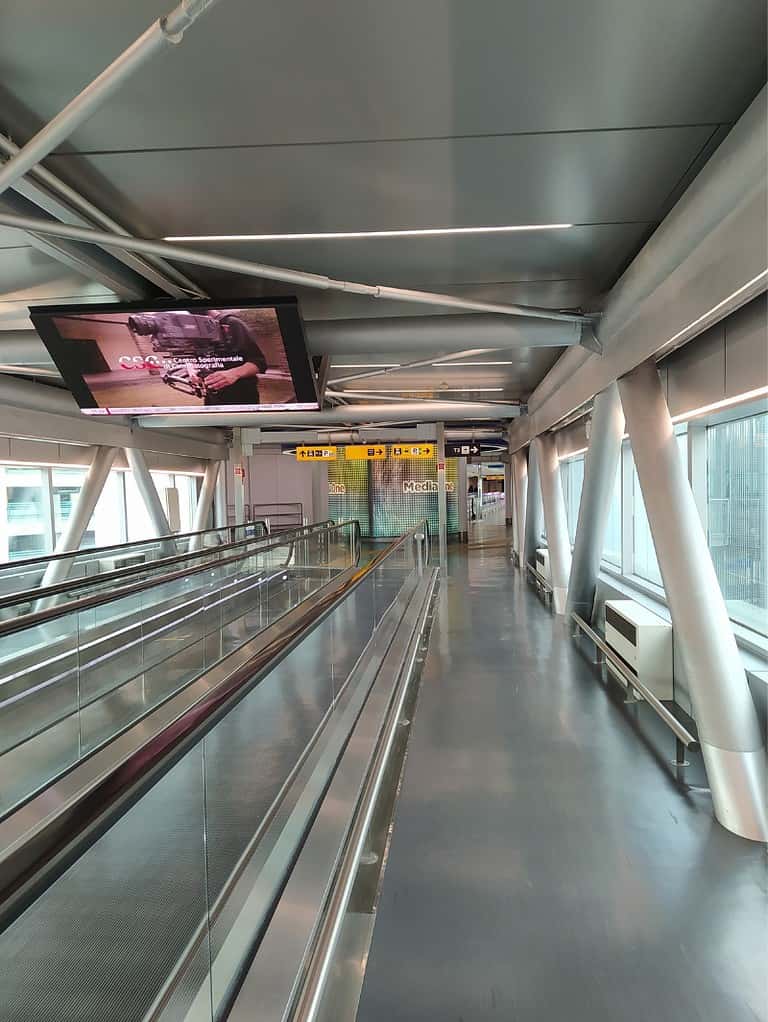
Both airports can be reached from Termini Station. Buses stop on the right side of the station (on the right side in the picture). Buses from Fiumicino Airport and Ciampino Airport stop right behind each other.
Tip: SIT Bus-Shuttle buses are the most reliable bus service. The buses are in good condition and the quality of service is the best. It is better to book SIT Bus-Shuttle buses in advance. In case of delays, you can take the next connection.
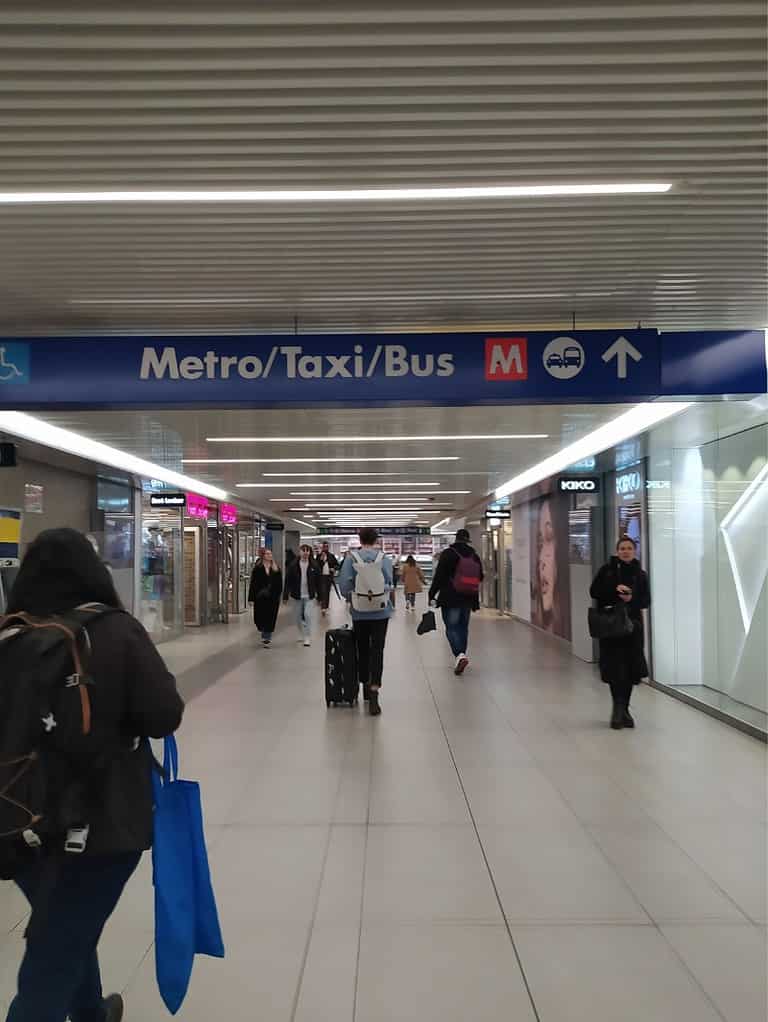
Public transport in Rome
In Rome, you can get around by metro, bus, tram and, in some places, by train. Only the subway is reliable. The metro runs from 5:30-23:30 and until 01:30 on Fridays and Saturdays. Buses are available from 5:30-00:00. Night buses run between midnight and 5:30am.
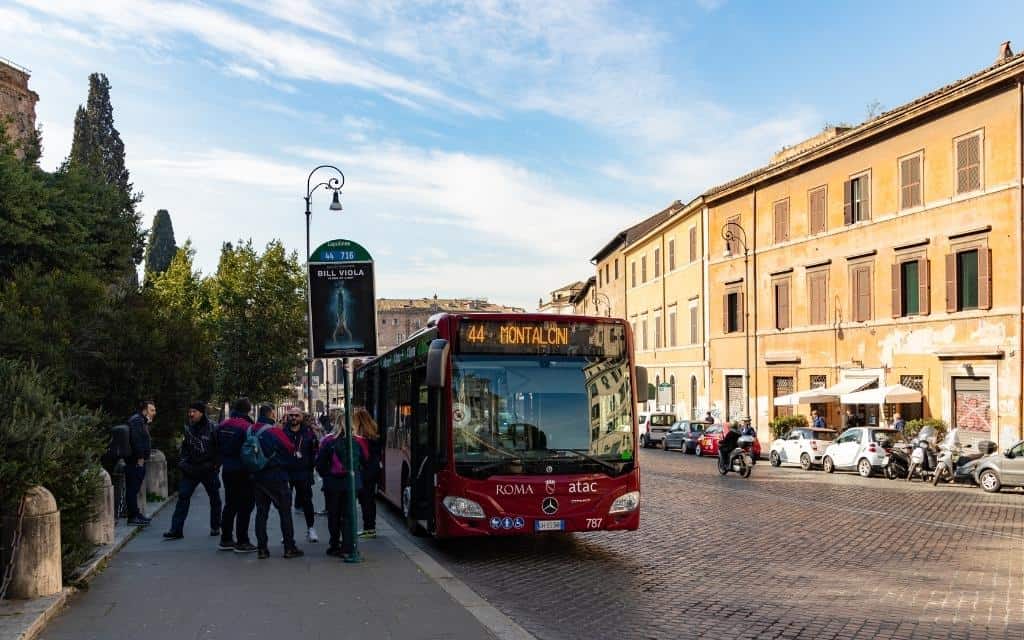
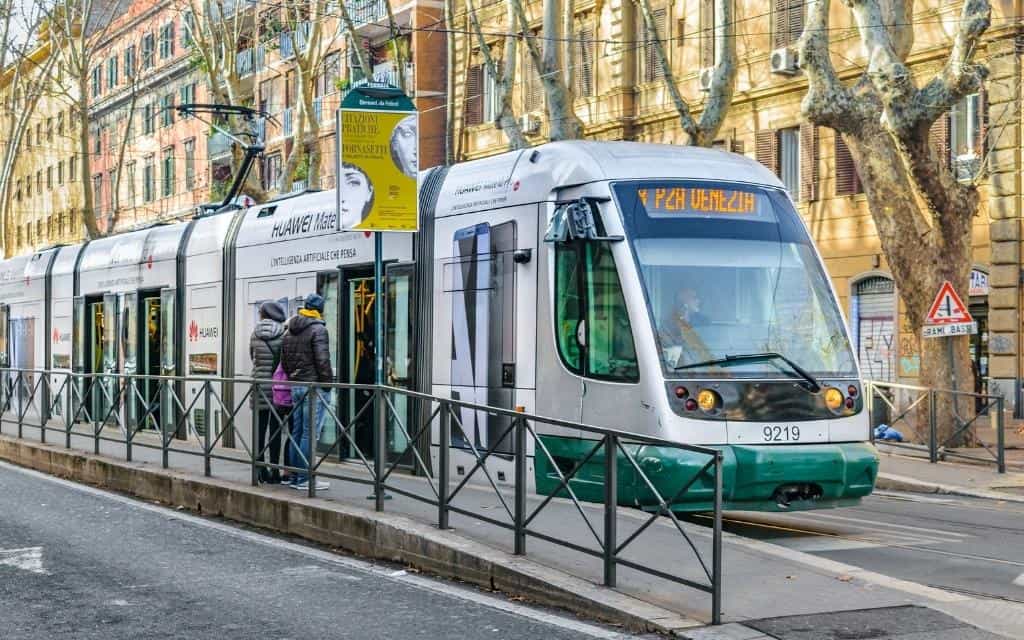
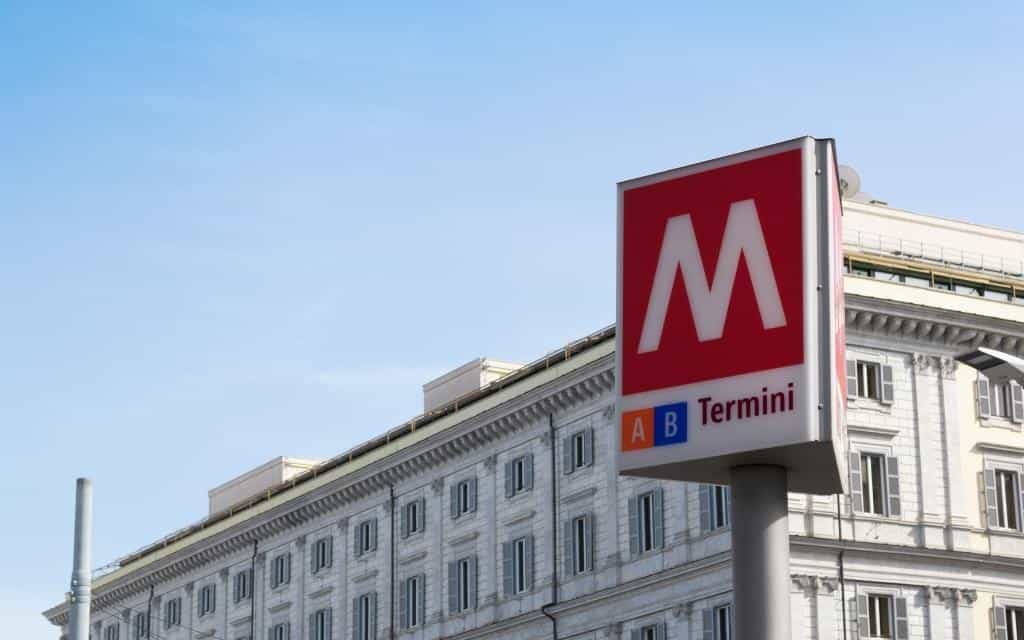
The metro system in Rome is simple – 3 lines A, B, C. If you plan to move around the centre, only lines A and B will be of interest.
Use the Red Line A to get to the Trevi Fountain, the Spanish Steps or the Vatican, for example. The Blue Line B takes you to the Colosseum and Old Rome. You can download a map of the metro in Rome at this link.
Tickets in Rome
- €1.50 – metro in one direction and bus services valid for up to 100 minutes (for metro only valid if you do not leave the turnstiles)
- 7 € – all public transport connections valid for 24 hours
- 12,50 € – all public transport connections valid for 48 hours
- 18 € – all public transport connections valid for 72 hours
- 24 € – all public transport connections valid for 1 week
- Unlimited free transport with Roma Pass
Public transport is free for children under 10 years of age. Older children already need a regular ticket.
You can buy your ticket at newsagents, newsstands, small grocery stores or vending machines in the metro. Please note: Tickets cannot be purchased from the driver. This should be kept in mind especially at night, when only night buses run.
Mark your ticket before you ride. On buses and trams, mark your ticket at the small yellow machines when you board. You don’t have to show it to the driver.
From March 2023, you can now pay for transport in Rome with your contactless card (or smartphone or watch). If you’ve paid this way in another city, it works exactly the same. When you board, you hold your card up to the reader and wait for the light to turn green. This will deduct the normal ticket price – you don’t need to buy a ticket.
If you change trains, you can always insert your contactless card into the reader again (even if the 100 minutes for which the tickets are valid have not yet elapsed – you will not be charged again within 100 minutes). In some metro stations, you will also need to present your card when exiting to go through the turnstiles.
For everything to work well, you must use only one card per person and not change payment methods within the same journey (card, mobile, watch).
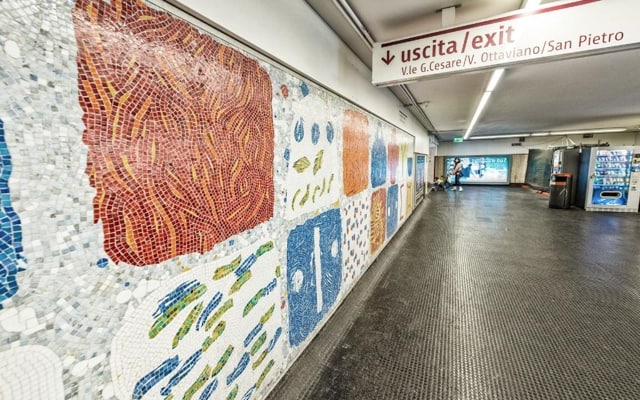
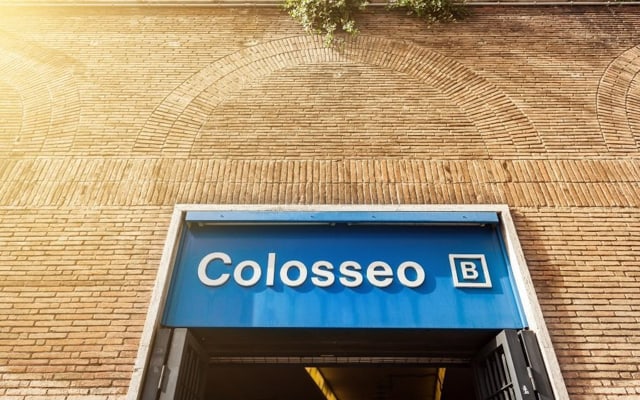
See more tips on how to save on transport and sightseeing in Rome.
Parking in Rome
Rome is the third busiest city in Europe. With their mood, it’s probably a foregone conclusion that parking is going to be a real hassle. Avoid parking in the centre if you can. Park on the outskirts of Rome and take public transport to the centre.
There are several parking zones in Rome, all of which are colour-coded:
- blue zone – paid parking. Short-term parking is usually cheaper and, with a few exceptions, is not charged on Sundays and public holidays.
- white zone – free, but max. 3 hours. They are mostly located near major hospitals and in the city’s tariff zones. Only residents with a permit are exempt from the time limit.
- yellow zone – the zone is for disabled persons and persons with disabilities.
- pink Zone – free parking for pregnant women and new mothers near outpatient and hospital facilities.
Up-to-date detailed information about parking in the centre of Rome – number of parking spaces and price.
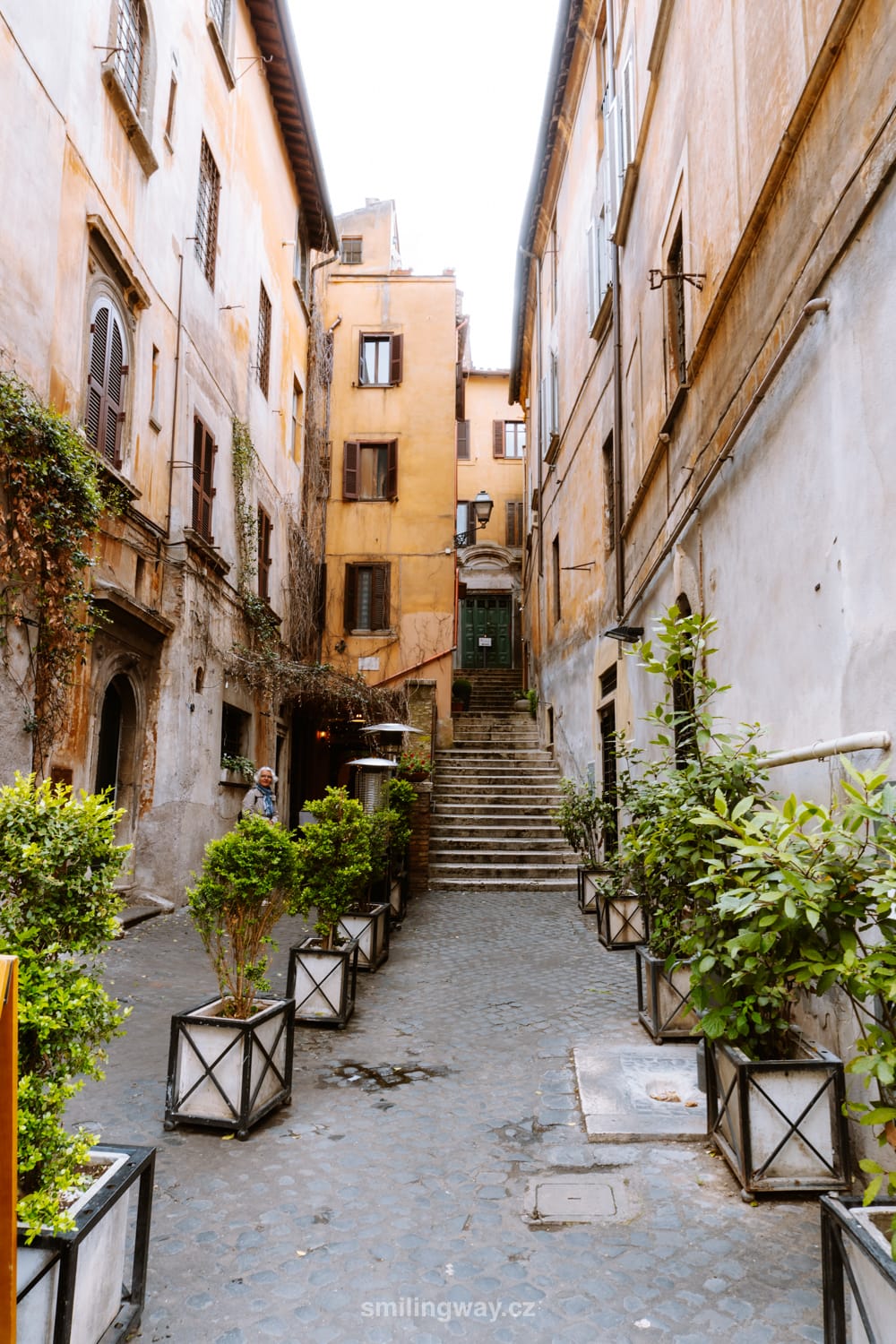
Where to stay in Rome?
If you’re visiting Rome for the first time, the best place to stay is the area between the Vatican to the west and Termini Central Station to the east.
You’ll be close to all the main sights, such as the Colosseum, the Pantheon, the Spanish Steps, the Trevi Fountain and the aforementioned Vatican. The historic centre of Rome is easily walkable.
You can just wander around the narrow streets and you will always come across a gem. What’s more, the centre is compact and once you’ve walked around a few times, you’ll get the hang of it relatively quickly.
Tips for the best accommodation in Rome:
- Hotel Impero – cheap hotel with excellent breakfast and roof terrace; older facilities but clean and cosy; quiet at night
- Hotel Borromeo – 3* hotel with air conditioning and roof terrace; minutes from the metro and within walking distance of the historic centre
- Hive hotel – 4* hotel with modern and clean rooms; rooms and suites for up to 4 people available; spacious roof terrace with seating and restaurant
- hu Roma Camping in Town – accommodation in air-conditioned bungalows or chalets, restaurant, refreshments, free parking, jacuzzi, swimming pool, bar
Hotels in Rome 😴
We’ve created a detailed guide on where to stay in Rome (best neighbourhoods and hotels, a map and how to get from your accommodation to the sights or the airport).
When to go to Rome?
Most people plan their exploration of Rome for the summer season. For our part, we can recommend visiting Rome in the off-season, as there are really long queues in high season.
April – May and September – October
Spring and autumn in Rome offer more pleasant temperatures, with average temperatures around 20°C. In spring, everything blooms beautifully, in autumn nature dresses Rome in warm colours.
It’s high season in Rome, when you can expect long queues and sold-out tickets for days or weeks in advance at the most popular sights as early as April.
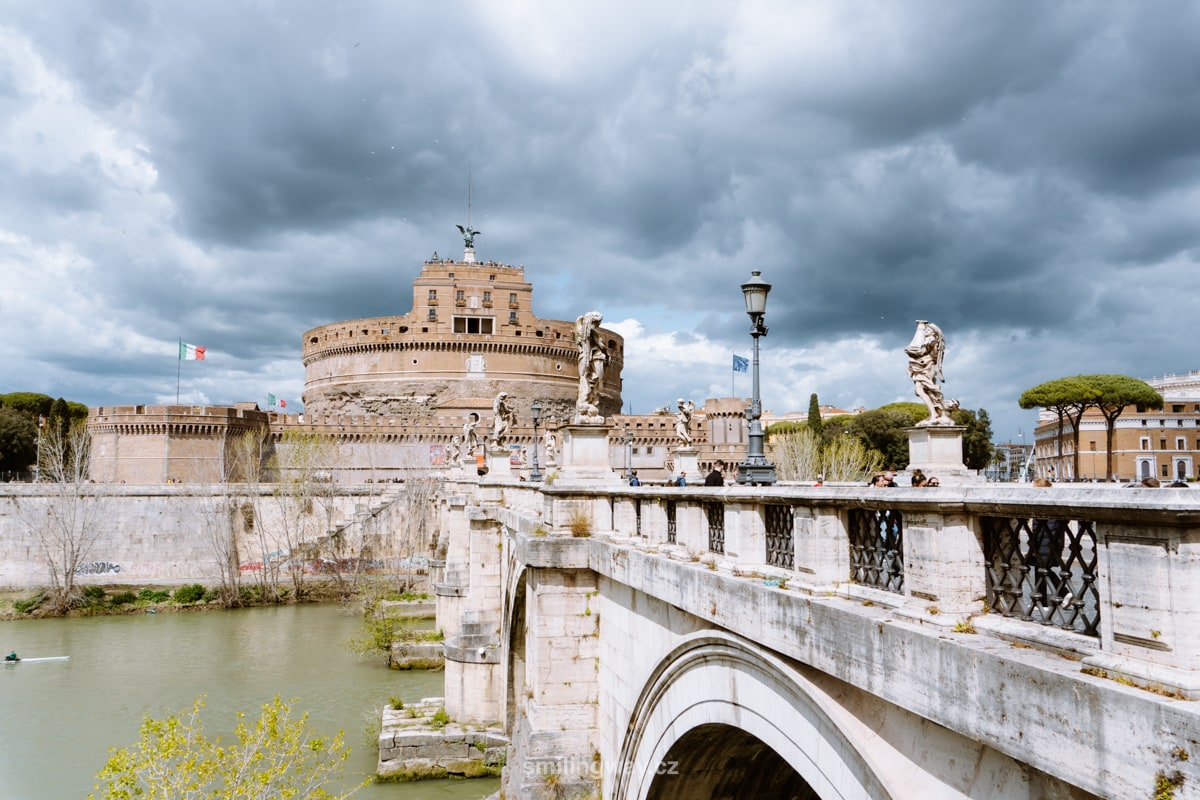
June – August
Summers in Rome are hot and sunny, with temperatures often exceeding 30°C. And in the city, temperatures seem even higher. Drinking water fountains are scattered around the town. Expect long queues at the most popular sights, such as the Colosseum and the Vatican Museums.
It’s best to plan tours for early morning or late afternoon to avoid the heat and crowds.
There are siestas in Italy in August, so some smaller shops may be closed.
November – March
This period is ideal for those who want to avoid the biggest crowds or are travelling on a budget. Accommodation and flights are usually the cheapest and queues are the smallest.
Winter months in Rome are mild, with temperatures usually between 8 and 15°C. It may rain, but snow is very rare in Rome.
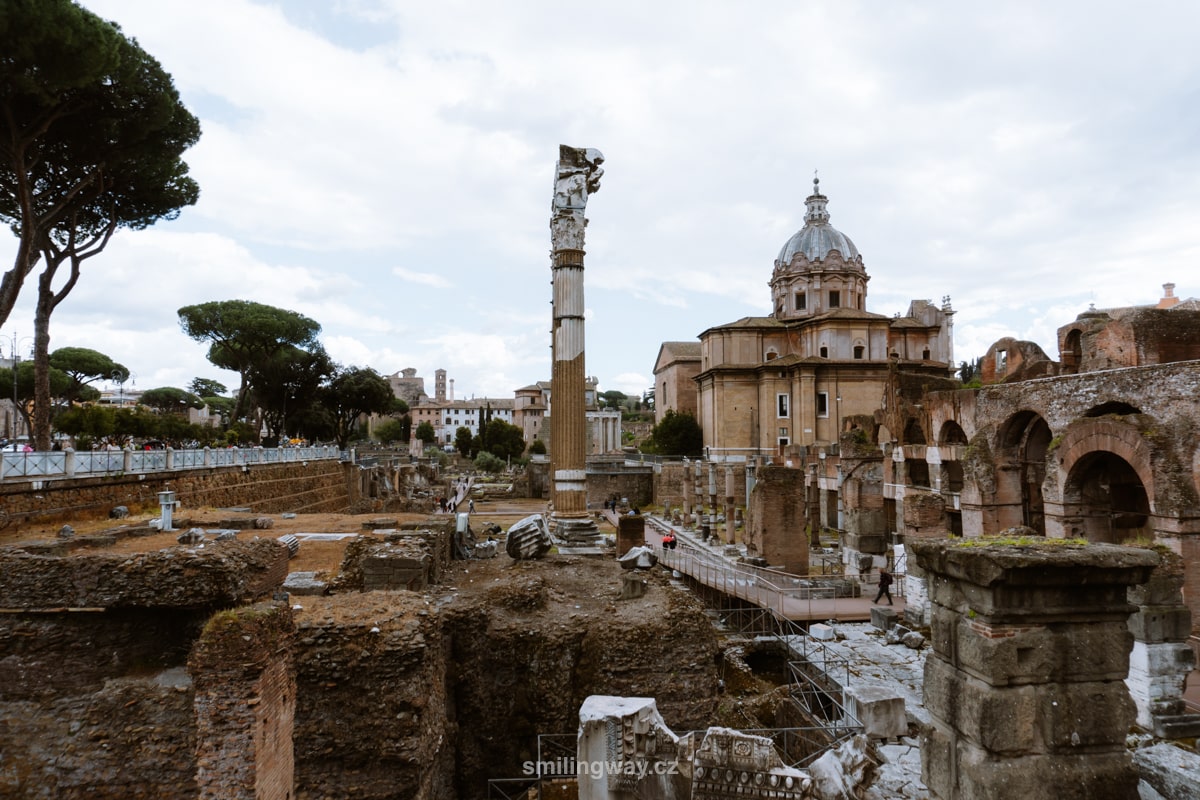
What to see in Rome?
Rome is literally littered with beautiful places and attractions that are worth seeing. We have already written several articles on this topic, where you can find inspiration and practical tips.
- What to see in Rome, including entrance fees and opening times
- 3 days in Rome: complete itinerary including map
- 1 day in Rome
- What to do in Rome?
- Vatican Museums
- Sistine Chapel
- The best museums in Rome
- Monuments of ancient Rome
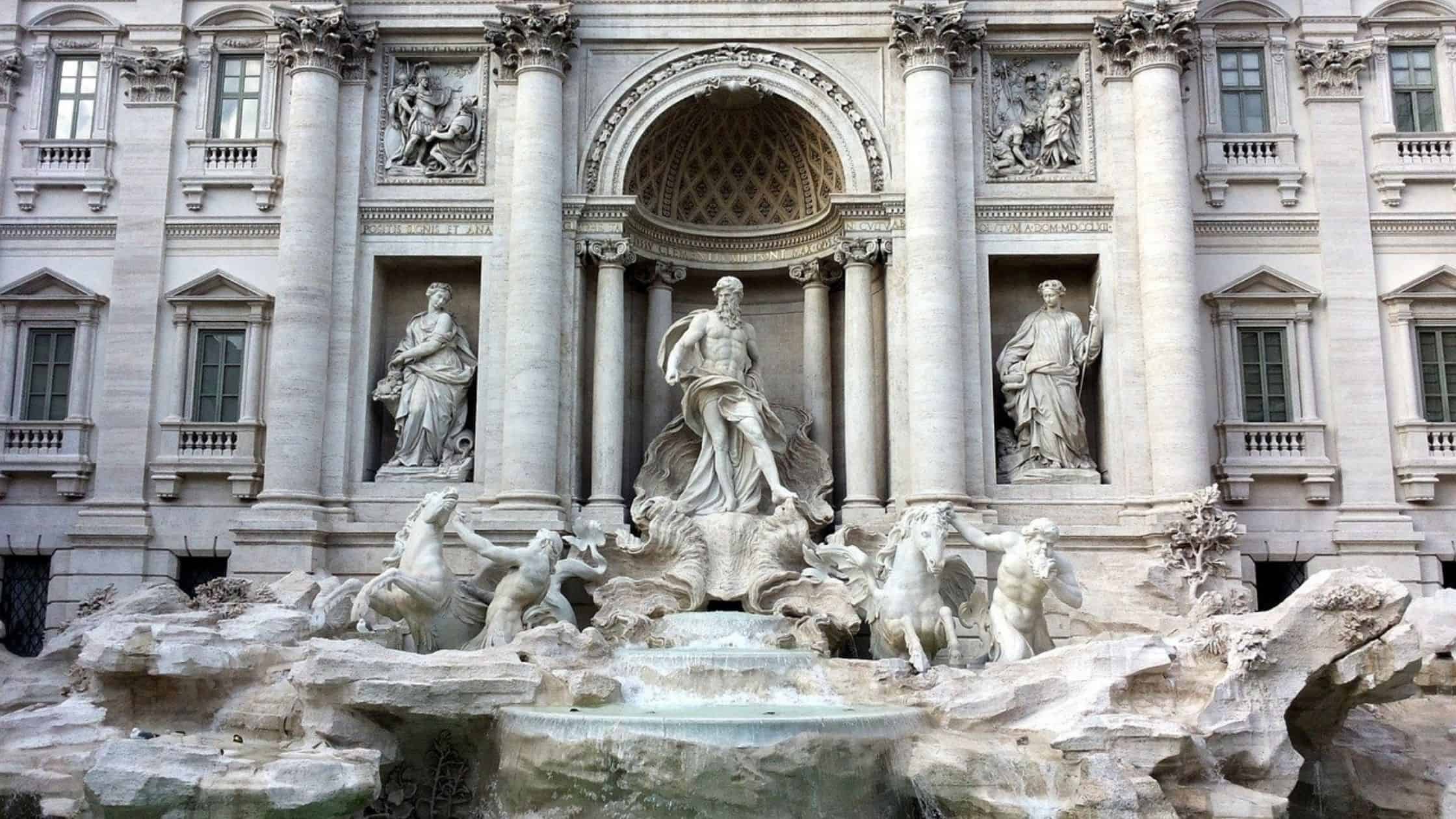
How to save money on sightseeing and transport in Rome?
In Rome, you can save money by the Roma Pass tourist card . With it, you get free admission to the most famous sights and reduced admission to many other places. The card includes unlimited travel around Rome and the use of information points with public toilets and the possibility to charge your phone.
Roma Pass is available in 3 variants:
- Roma Pass 48 hours – free entry to the first monument you visit (I recommend choosing the Colosseum first to save the most) and reduced admission to all other monuments you visit within 48 hours. Unlimited travel for 48 hours in Rome on top of that.
- Roma Pass 72 hours – free entry to the 2 sights you visit first (such as the Colosseum and Capitoline Museums) and reduced admission to all other sights you visit within 72 hours. Here, too, unlimited travel is valid for the duration of the card.
- Roma Pass in combination with the Omnia Card – you get the benefits of the Roma Pass for 72 hours, as well as free admission to the Vatican Museums, the Sistine Chapel and a 72-hour sightseeing bus ride that takes you around Rome’s biggest attractions (you can get off and back) at any time.
Find out more in our detailed review.
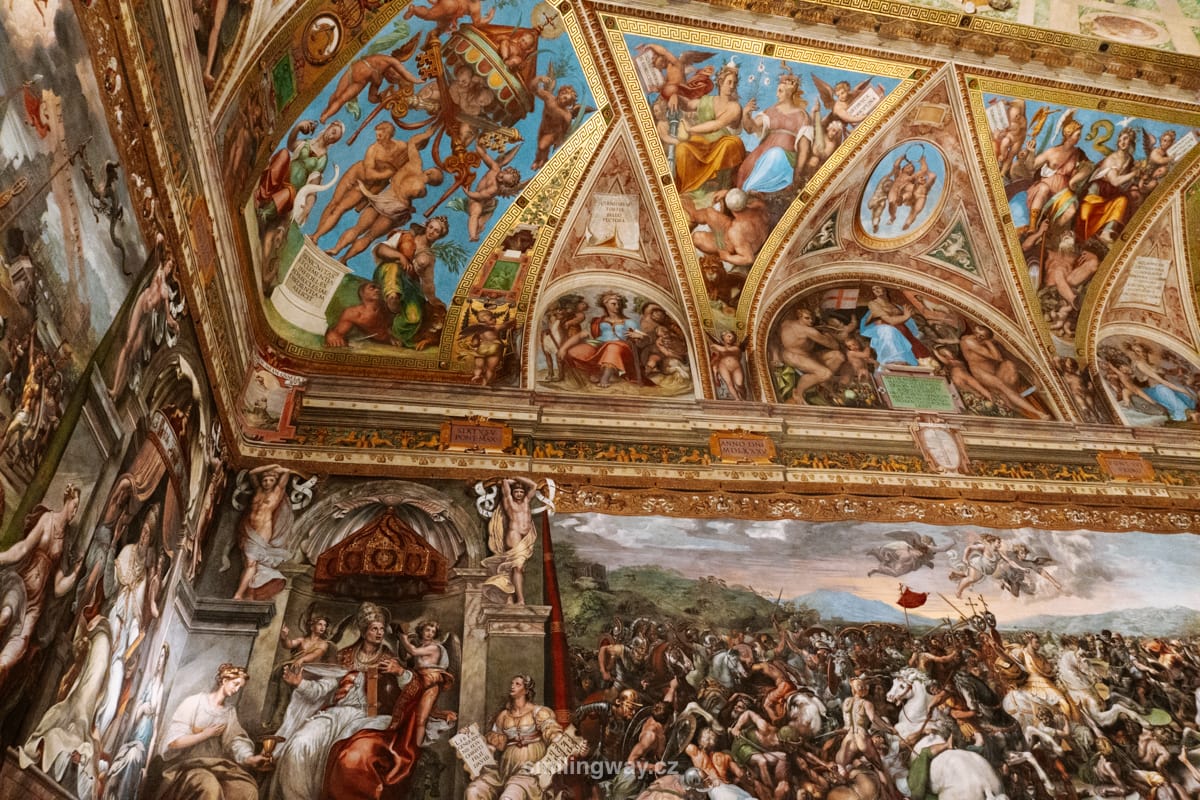
Where to eat in Rome?
If you’re looking for the most authentic Roman cuisine, head outside the centre. The best place to go is across the river from the centre to the Trastevere district, where the food is great in almost every restaurant. Moreover, at prices without tourist surcharge.
Other great areas for locals to eat are the Testaccio and Garbatella districts south of the Colosseum.
Drinking water is free and comes from the mountains outside Rome. Drink it at the fountains, called nasoni. You squeeze the opening with your fingers from underneath and from the top you can drink comfortably through the other opening.
What to taste in Rome?
Roman cuisine is renowned for its simplicity and quality ingredients and rich history. Here are some typical dishes you shouldn’t miss when visiting Rome:
- Cacio e Pepe – pecorino romano cheese, black pepper and pasta, usually tonnarelli or spaghetti. It is a perfect example of the Roman culinary philosophy of “less is sometimes more”.
- Carbonara – another classic of Roman cuisine is carbonara. A true carbonara in Rome is made with guanciale (smoked pork cheek), eggs, pecorino romano cheese and black pepper.
- Amatriciana – bucatini pasta prepared with guanciale, pecorino cheese and tomato sauce.
- Supplì – fried rice balls filled with tomato rice, mozzarella and sometimes meat ragout
- Artichokes – in Rome you will find artichokes prepared in two traditional ways: ‘Carciofi alla romana’ (artichokes cooked with herbs and olive oil) and ‘Carciofi alla giudia’ (artichokes fried until crispy).
- Pizza al taglio – Pizza al taglio is a typical Roman pizza that you buy by the slice. It has a thin and crispy dough and is offered with different kinds of garnishes. Perfect for a quick lunch or snack while exploring the city.
- Gelato – A visit to Rome is not complete without a true Italian gelato.
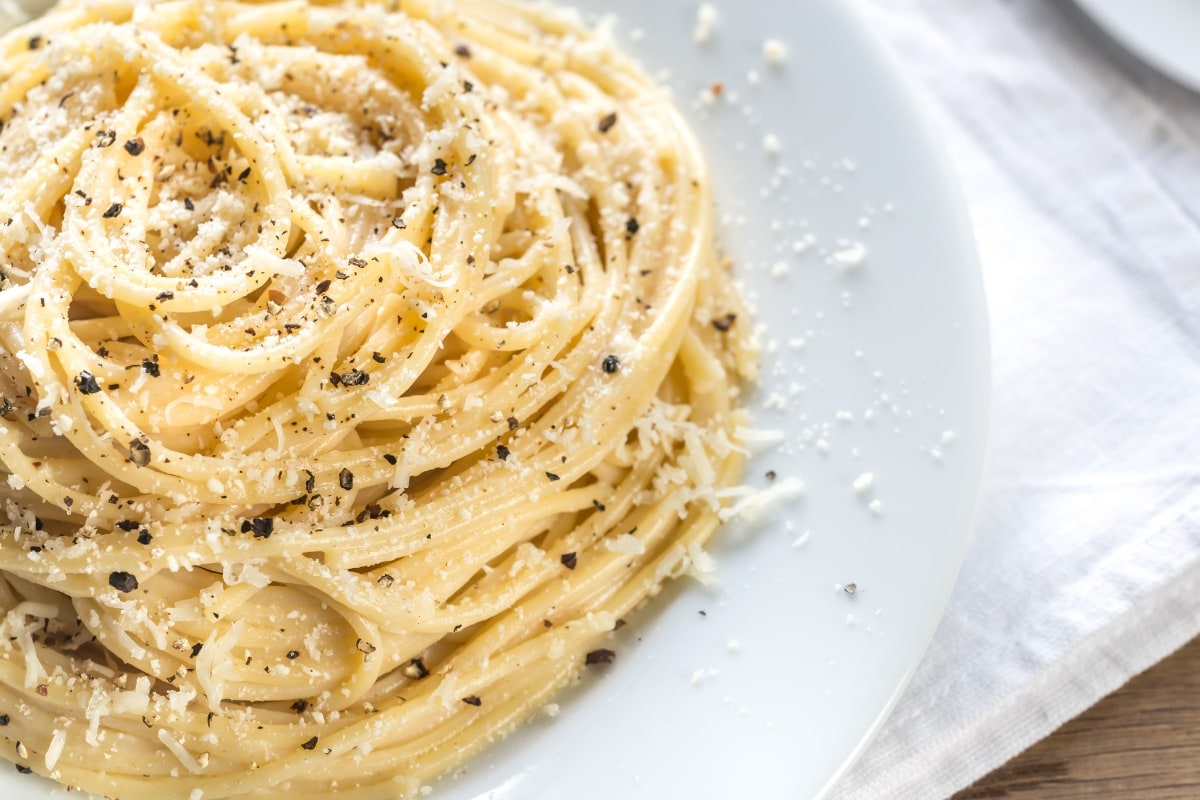
Shops in Rome
In Rome you can easily shop at Lidl, LD Market, Penny Market, Eurospin, In Mercato.
Farmers’ markets
Farmers’ markets are a must in Rome. You can buy local ingredients and eat well at the same time. The most popular markets include:
- Mercato Testaccio Farmers’ Market – the best of the best. For some, not only in Rome. It can be found 3 km southwest of the Colosseum. It is open every day except Sunday from 7am to 3:30pm.
- Look for the Mercato Centrale Farmers’ Market right at Termini Station. They are open all year round from 8am to midnight.
- The Campagna Amica Farmers’ Market can be found west of Palatino Hill and the Colosseum. Right across the street from the Circus Maximus ancient sports venue. You can come here on Wednesdays and weekends from 8 am to 3 pm.
- Campo de’ Fiori farmers’ market in the square of the same name, if you’re looking for something more central towards the Vatican. It is open every day except Sunday from 8 am to 2 pm.
Fast food in Italian style
Pizza and paninis are the most common form of fast food in Rome. In the case of pizza, it works by just showing your hands how big a slice you want.
Have you heard of trapizzino? This is a stuffed pizza pocket. It has several branches in Rome. One of them is located in the Testaccio district.
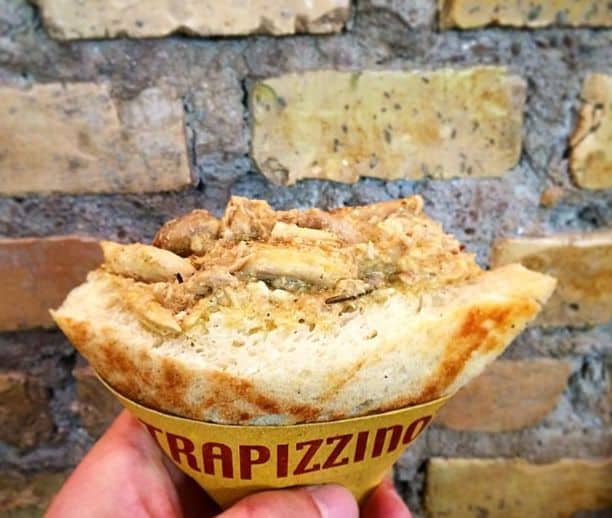
A renowned street food place is PanDivino, for example. You will find it 600 metres from the Pantheon, as you walk towards the Vatican.
How to fit in when eating with the Italians?
- Italians are coffee lovers. They always have it after meals.
- Cappuccino is only allowed until 11am for breakfast.
- Fancy a latte? Then in Italy you will get a cup of hot milk. To get the classic latte as we know it, order a latte macchiato.
- Want to save money when drinking espresso? Step up and it will set you back €1-2. Stay seated and you’ll pay 5€.
- You don’t order ice cream by the scoop, but by the size of the cone.
- Choose a restaurant where there is no English menu.
- Ask for “vino della casa”. You get cheap but good local wine.
- A typical Italian breakfast consists of coffee or cappuccino, cornetto (similar to a croissant) and orange juice. In Italy they are not used to salty breakfasts.
- Going out to dinner? Don’t be surprised if many restaurants are still closed between 6-7pm. In Italy, dinner is late.
- Try “aperitivo”. It is a kind of pre-dinner served between 6 – 8 pm. You can order pizza, nuts and other snacks along with Aperol.
- Tipping is not customary in Italy. At least as far as typical authentic restaurants outside the main centre where the locals go. Instead, you will automatically be charged a coperto. This is the service charge and the bread that is on the table. Look for the fee on the ticket under servizio.
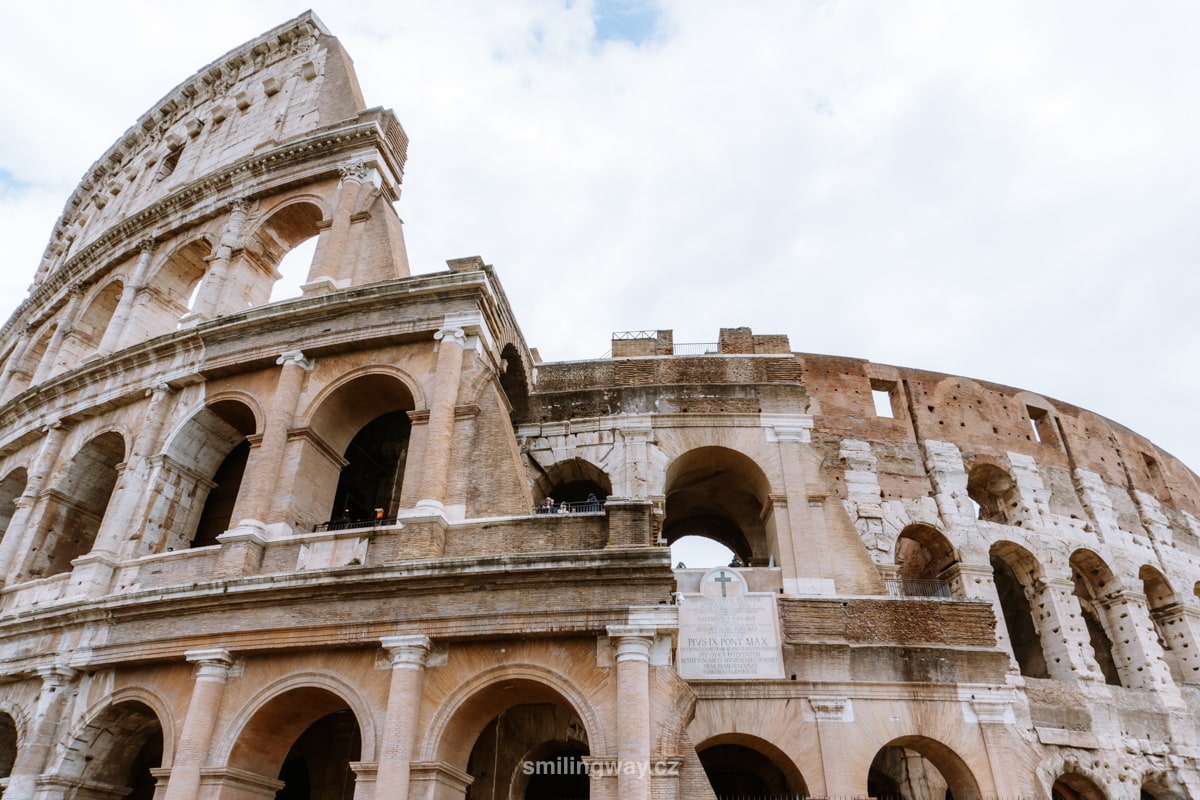
Prices in Rome
How high are food prices in Rome? Below are the prices of selected foods:
- Milk 1 l – 1,56 €
- White bread 0,5 kg – 1,76 €
- Eggs 12 pcs – 3,62 €
- Chicken breast 1 kg – 10,66 €
- Apples 1 kg – 2,09 €
- Bananas 1 kg – 1,89 €
- Tomatoes 1 kg – 2,40 €
- Rice 1 kg – 2,58 €
You will pay about 5-7 € for a pizza. A meal in a restaurant will cost you an average of €35-40 per person. In the centre, it’s a few euros more.
The meal is automatically accompanied by a coperto, a dining service that is a standard part of Italian culture. It usually ranges between €1-3, but can be higher in upscale restaurants.
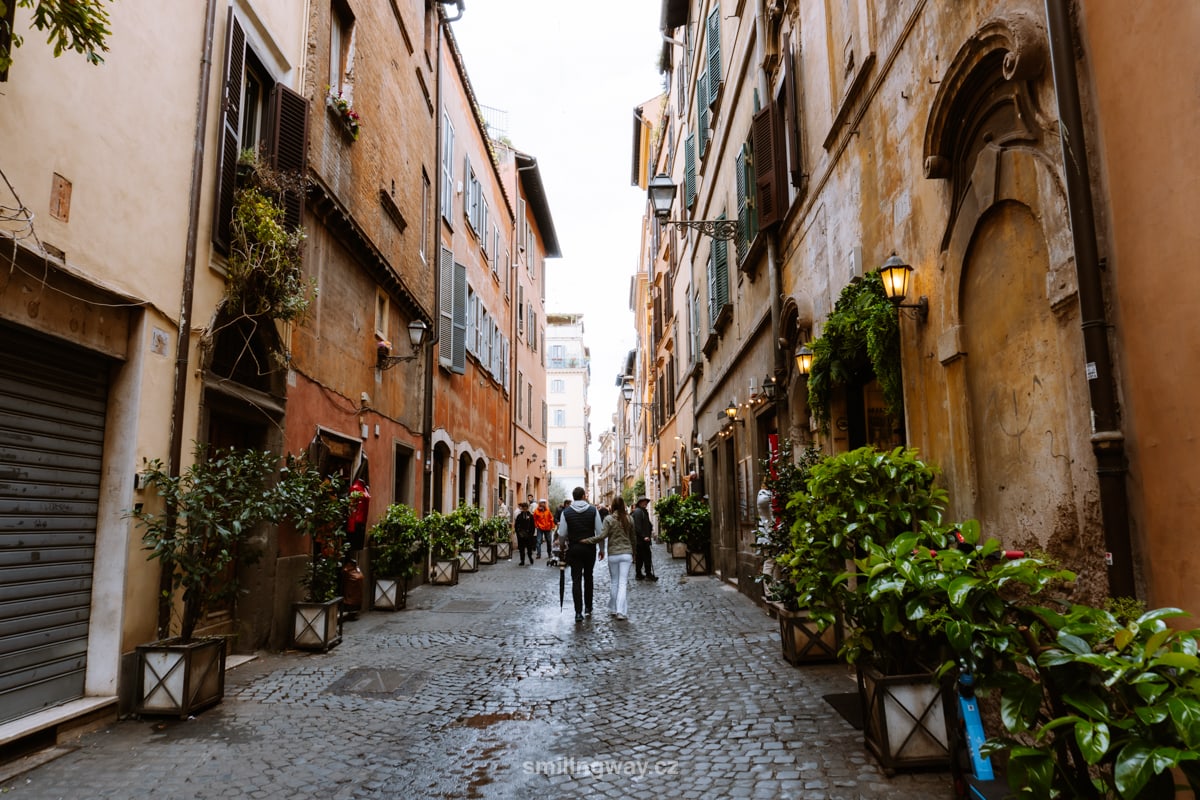
How to get from Rome to the sea?
From Rome you are at the sea in a few dozen minutes. If you have enough time, it would be a shame not to take advantage of it, even if the beaches here are not among the most beautiful in Italy. Plus, you can get to the sea for the price of a regular ticket that you also use in the city (for example, the beach in Lido).
Keep in mind that most of the beaches around Rome are private. These beaches are called stabilimenti. You will pay 10 – 30 € per day. The price includes a clean beach, sunbed, umbrella, changing room, outdoor shower, good access to water and toilets.
Sperlonga
Let’s start with the best one. It’ll take you the longest to get here of all the options, but it’ll be worth it. The beach has won awards for its water quality, cleanliness and environmental friendliness. Most of the beach is private. The small town of Sperlonga with its white houses is worth a visit in itself.
How to get to Sperlonga Beach from Rome? Take the train at Termini Station and travel to Fondi-Sperlonga Station. Take the bus directly to Sperlonga.
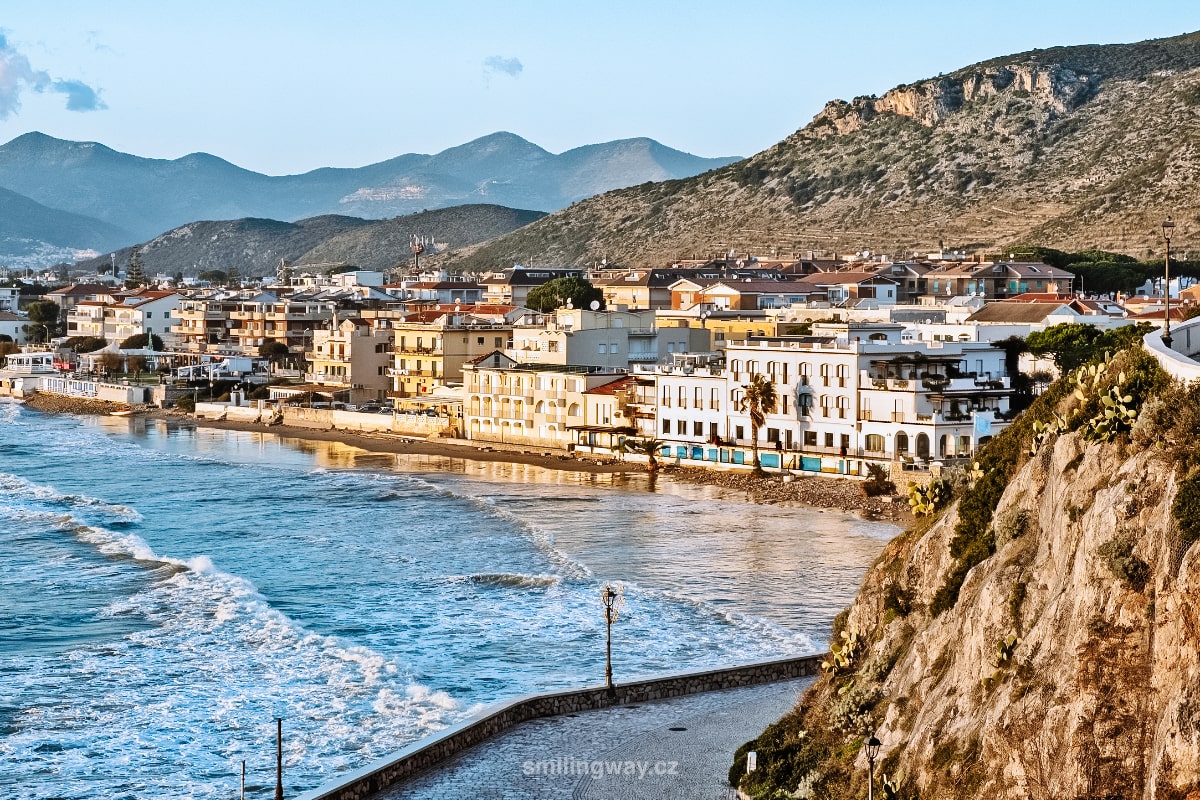
Santa Severa
Santa Severa is also north of Rome, just 1 station before Santa Marinella. From the beach, you’ll be treated to an impressive castle.
How to get to Santa Severa Beach from Rome? You get on the same train as if you were going to Santa Marinella.
You’ll get off at Santa Severa station.
It’s a 20-minute walk to the beach.
Ostia Lido
The closest (and most crowded) option is the beach at Ostia Lido. There are public and private beaches.
On the way you can visit Ostia Antica, an archaeological site on the outskirts of the city. There’s no shade, so it’s a good idea to plan a visit right at opening time.
How to get to Ostia Lido from Rome? You take the metro B to Piramide station. At the station, after getting off, follow the signs that lead you to the train to Roma – Lido – up the escalator and to the left. Get off at Lido Centro.
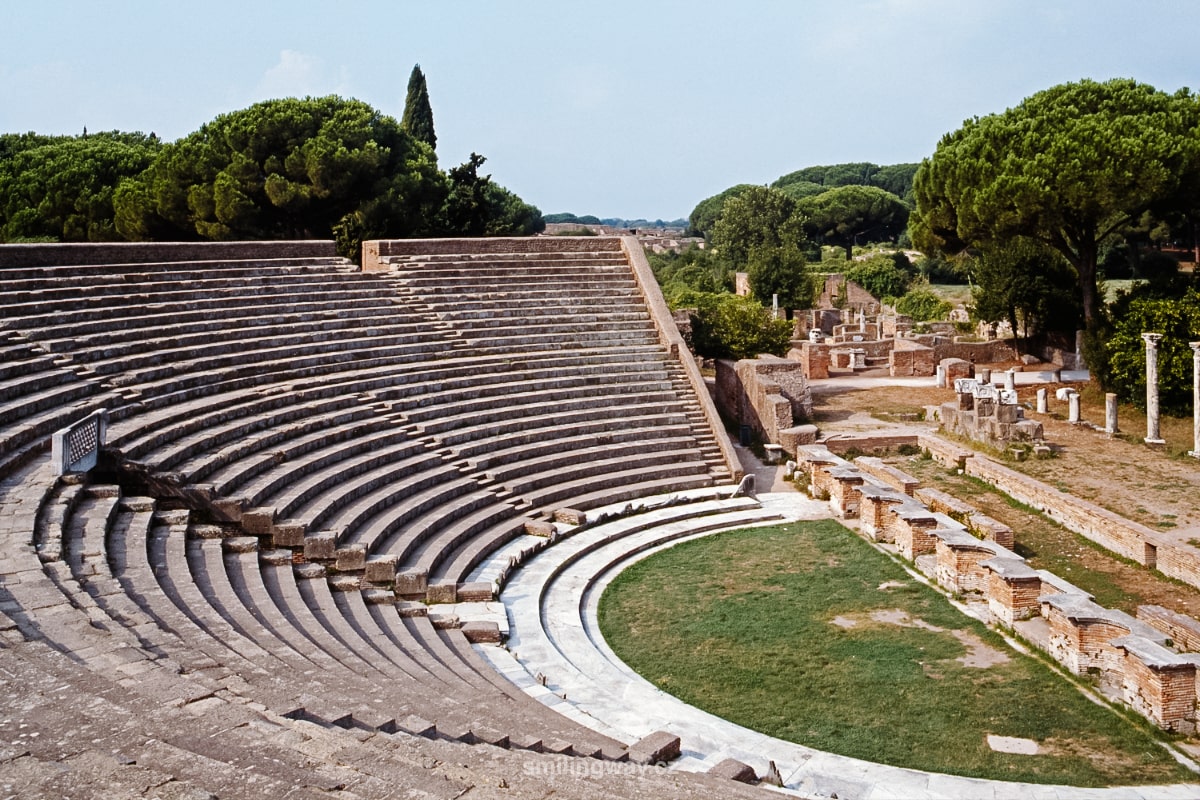
Santa Marinella
Santa Marinella is a town north of Rome with nice sandy beaches. Public and private.
How to get to Santa Marinella Beach from Rome? The town can be reached by train from the main stations in Rome (Termini, Ostiense, Trastevere, San Pietro). You can choose from 2 to 3 connections per hour. The beach can be reached in 5 minutes from the station.
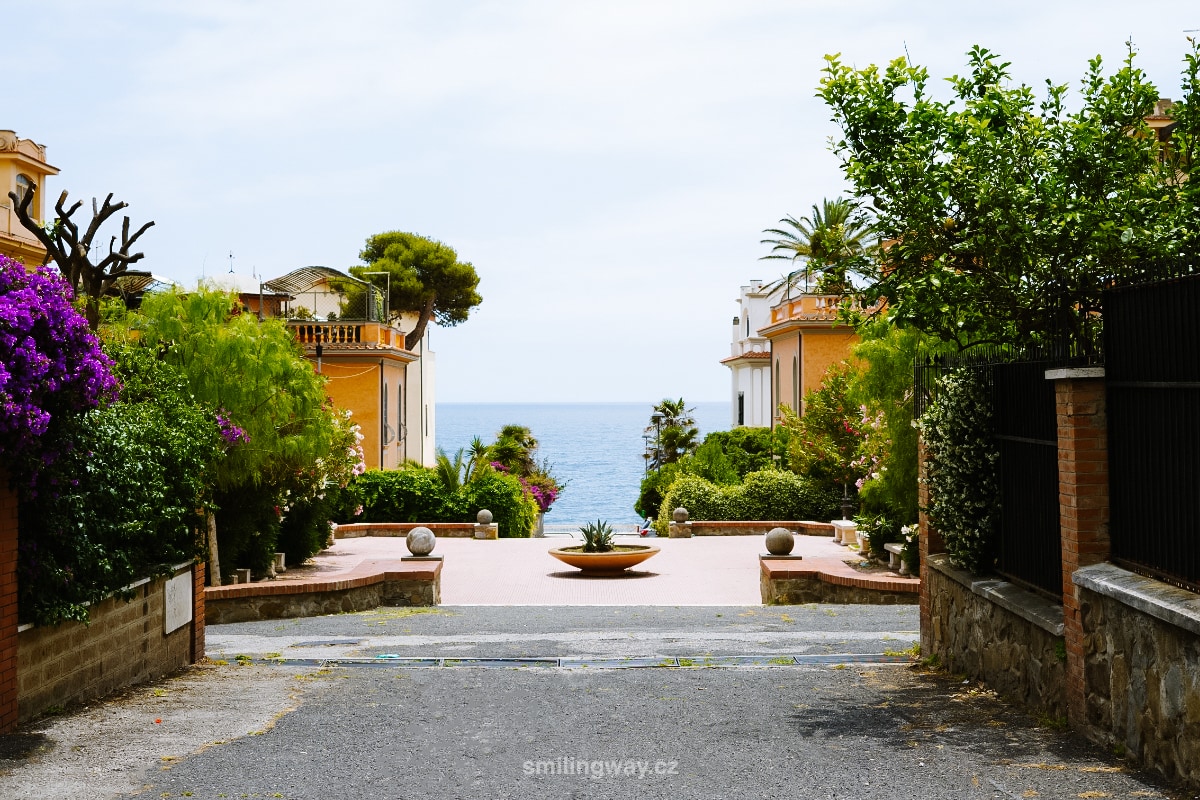
Fregene
Fregene is located north of Ostia. It is especially popular with young people as there are many bars and nightclubs. The Singita Miracle Beach Club is a famous bar, where pillows are spread across the beach in the evening and a gong sounds at sunset.
How to reach the beach in Fregene from Rome? Take the train from Termini Station to Fregene, where you get off at Maccarese – Fregene station. From there, take the local bus, which runs at regular quarter-hourly intervals.
Anzio
Anzio is south of Rome. It’s a bit further, but the journey is worth it. The clean beaches and water have won the Bandiera Blu award for quality, cleanliness and environmental friendliness. When you don’t feel like relaxing on the beach, explore the ruins of the ancient villa of Emperor Nero.
How to reach Anzio Beach from Rome? Anzio can be reached by train from Termini Station to Anzio Colonia Station. Several nice beaches are just a few steps away. Want more privacy on the beach? Get off at the next station, Nettuno.
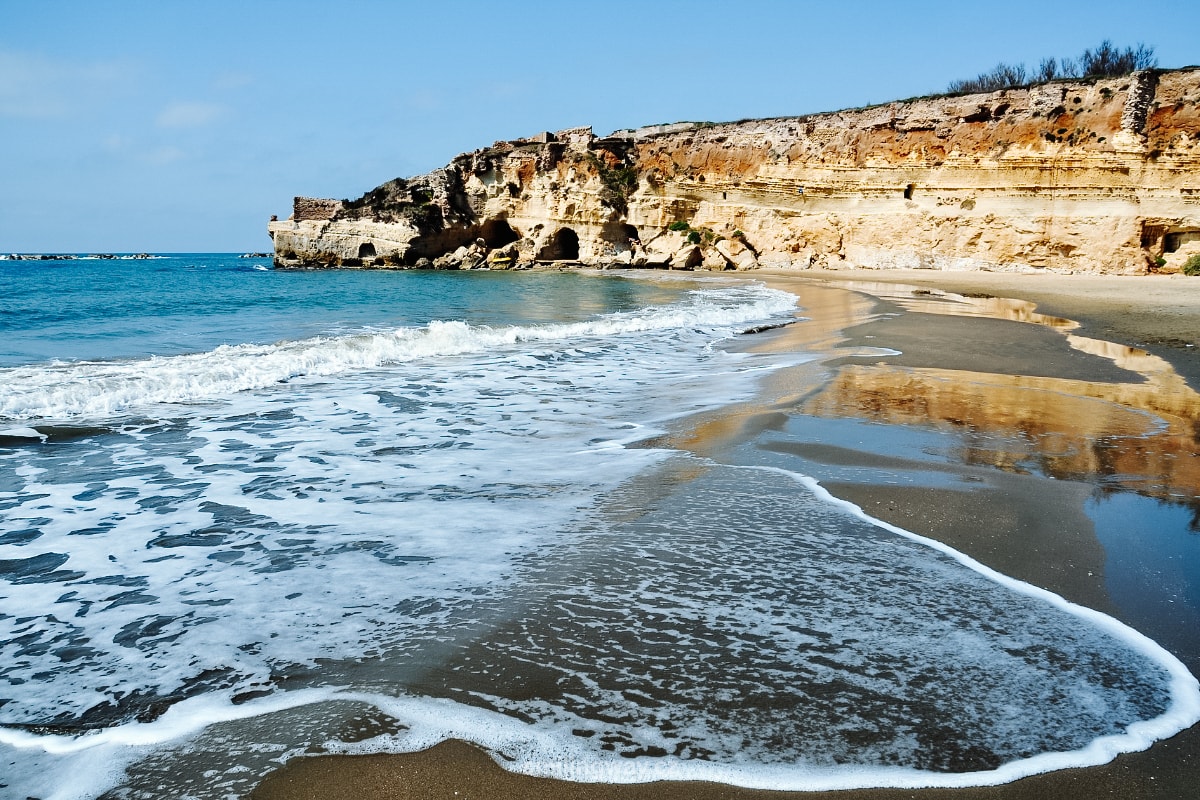
Sebaudia
The town of Sebaudia is located even further south of Anzio. The connection here from Rome is not quite ideal. That’s why the beaches here are not crowded.
How to get to Sebaudia Beach from Rome? At Termini Station, take the train to Priverno-Fossanova and take the COTRAL bus to Sebaudio. The beach is reached by wooden stairs.
Ladispoli
Ladispoli is a resort north of Rome with a long beach.
How to get to Ladispoli Beach from Rome? You take the train from most stations in Rome to Cerveteri-Ladispoli station. You are at the beach in 10 minutes.
More tips on how to enjoy Rome a little more
A typical very informal greeting is ciao (something like the Czech čau or German servus). In shops and older people it is better to greet more formally:
- Biongiorno – Good day
- Buona Sera – Good evening
- Grazie – Thank you
- Gelato – Ice cream
- In Italy, it is customary to give 2-3 kisses on the cheek.
- Don’t be surprised by the afternoon siesta, the so-called riposino. Usually between 1pm and 4pm in smaller towns or smaller shops.
- Carry cash, especially coins. In Rome, they’ll let you use the toilet in restaurants. For a small fee.
- Speaking of toilets, a lot of places don’t have a toilet with a seat.
- Beware of street vendors. Especially at the Colosseum, where they will try to sell you tickets at a higher price.
- Keep an eye on things. There’s theft everywhere. It’s just that there’s a bit more theft in Rome.
- Choose sturdy shoes. Rome is typical of its uneven cobbled pavements.
Map of Rome
HOW TO USE THIS MAP: Above you will find a detailed map of Rome. Click on the top left of the map to see separate layers with places marked. You can hide and show the different layers, or click on the icons on the map to see the names of the places mentioned in the Rome guide. If you want to save the map, mark it with an asterisk. For a larger version, click on the icon in the top right corner.
These were our tips on how to enjoy travelling to Rome. Do you have a question? Ask in the comments below. Have a safe journey!
More about Rome
THE BEST PLACES TO VISIT IN ROME: In our article on what to visit in Rome, you will find detailed descriptions of the most beautiful places, including information on admission fees and opening times. We also have special guides for the monuments of ancient Rome or the best museums in Rome.
We’ve created a detailed guide to the Vatican that tells you everything you need to know before your visit.
Read the guides for the Vatican Museums and the Colosseum to avoid queues on site. What not to miss in the Sistine Chapel is covered in a separate article.
ITINERARY FOR ROME: Get inspired by our itinerary for Rome in 3 days. You only have one day? Then you will find the itinerary for Rome in one day handy.
ACCOMMODATION IN ROME: We’ve created a detailed guide on where to stay in Rome (best neighbourhoods and accommodation on a budget, a map and how to get from your accommodation to the sights or the airport).
HOW TO ENJOY ROME: For tips on the best things to do in Rome, check out our article on what in. We also share some tips on how to save in Rome. In a separate article, you can find out about all the ways to get from Fiumicino Airport to the centre of Rome.
